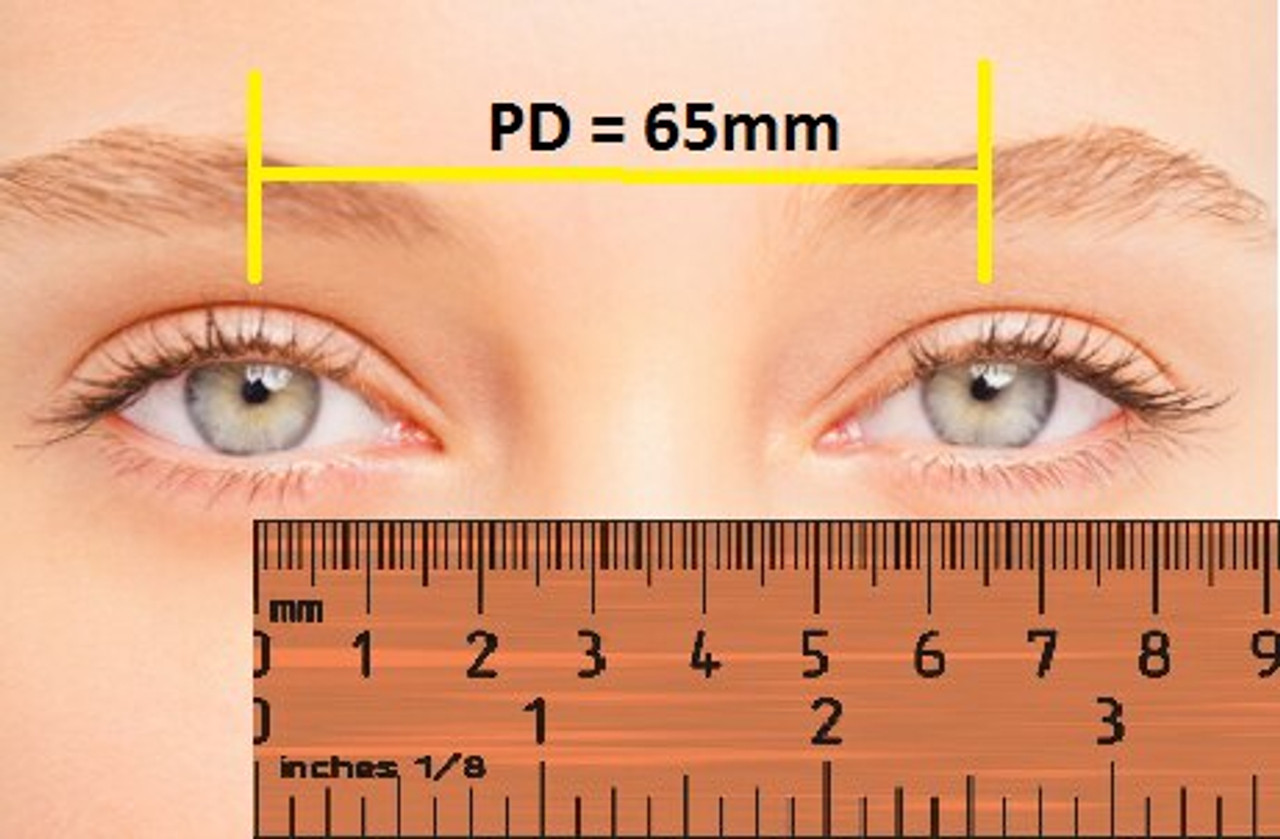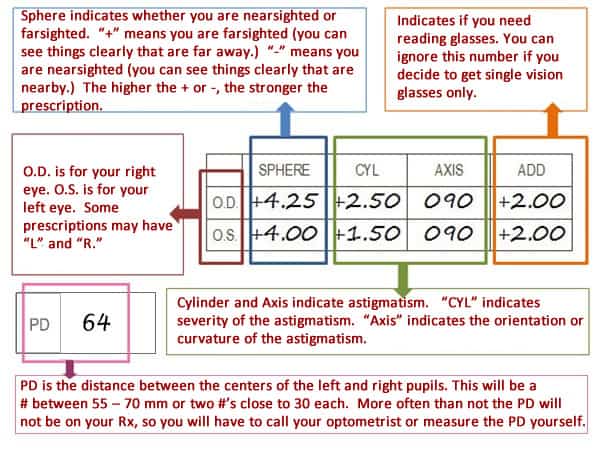Understanding Your Eyeglass Prescription
Shop Prescription Glasses
Yes, your optical prescription is a collection of strange numbers and plus and minus signs. However, with a little work, anyone can read and understand their prescription. First, we need to understand the information provided on the prescription form.
What does your prescription look like?
The form will usually have separate places for each eye. The left eye is usually abbreviated OD and the right eye is usually abbreviated OS. These two terms are a shorthand way of naming eyes in Latin. Some modern scripts are starting to use simply RE for right eye and LE for left eye. If neither of these terms are on the prescription, the top set of numbers is for the right eye and the bottom is always for the left eye. If for some reason you only need a prescription for only one eye, only the left or right eye area will be filled in. Usually, during the exam, the examiner will look at the right eye first; its closer to him or her.
What do the numbers on your prescription mean?
The first number on the prescription is for a distance correction. It is written in diopters and may be written as 4.5. Lenses are ground using a measurement called diopters; the increments are usually in 0.25 diopter segments. Your examiner will present you with a number of lens choices and will have you select the choice which works best. If you have a previous prescription, to save time, the examiner will set up this prescription on the exam system. Then, he or she can work from there to see if you need an adjustment. This part of the prescription is called the Sphere and may be abbreviated by SPH. This is the part of the prescription that corrects nearsightedness (myopia) or farsightedness (hyperopia). A plus sign may be added for farsighted prescriptions; a negative sign for nearsightedness.
For those who have astigmatism, which causes blurring due to parts of the eye being misshaped, this is written on the prescription next. If you don't have this, and not everybody does, then the prescription will continue on to the next section. This part of the prescription is abbreviated with CYL and will contain a number such as 2.0 D for diopters. It can also include the axis basis used for the measurement, usually 180 degrees. This correction to the lens will eliminate any blurring in your vision. Each eye can have its own astigmatism script.
What do the abbreviations on your prescription mean?
If you have some problem with alignment in both of your eyes, this is called a prism measurement and is abbreviated PR. This is not always found on every prescription. Some eyes have vision issues because both eyes are not matched equally. This can cause another type of blurring to your vision. This type of correction is always down in one eye and up in the other.
Some prescriptions also have "ADD" in them. This is an additional correction and is often used for bifocals; trifocals would have two ADD items. This is the correction needed to make part of the glasses useful for close up reading and other work. Clearly, if you don't wear bifocals, there will be no numbers written after the "ADD" on your script. Additional items to be added might include UV or anti-reflective coatings or progressive lenses.
The simplest eye prescription will be written something like -.50 over +.25. If you keep your own record of your scripts, you can view how your eyes change over your lifetime. If you are still confused, ask your examiner to explain the prescription to you. A prescription for eyeglasses will not work for contact lenses; these are different lenses and need their own script.
Check out how to enter your eyeglass prescription here.
Prescription Swim Goggles – Sports Goggles – Ski Goggles
Leader in Prescription Goggles and Glasses
Kids RX Swim Goggles – Adult RX Swim Goggles – Prescription Sports Goggles - RX Ski Goggles

 Canadian Dollar (CAD)
Canadian Dollar (CAD)
 Euro (EUR)
Euro (EUR)
 British Pound (GBP)
British Pound (GBP)








